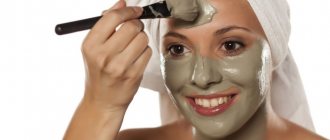If a puffy face constantly looks out of the mirror in the morning, then this is a reason to seriously think about it. Puffiness or pastiness indicates a violation of fluid distribution. It just doesn't happen like that. Behind puffiness there are serious problems with the body. This is how some diseases manifest themselves. If the process becomes permanent, you need to visit a doctor and undergo an examination.
The concept of pastiness
Pastiness of the face appears as a result of impaired distribution of fluid in the face
The name of this condition comes from the Latin word “pasta”, since the signs of the pathology make the face look like dough. Everyone knows that the human body consists of a large amount of water, which is part of the cells, helping to keep the skin in a firm, elastic state. As a result of a violation of the distribution of fluid in the body, a change in blood circulation occurs, leading to improper outflow of lymph and intercellular fluid, resulting in pastiness, swelling and looseness of facial tissues.
Some of the provocateurs of chronic fluid outflow disorders are:
- thinning of the walls of capillaries and blood vessels;
- increased pressure in the bloodstream, for example with an excess of sodium ions (salts).
The development of the defect is facilitated by disruptions of the immune, nervous, endocrine, and respiratory systems, as well as diseases of the liver, kidneys, heart, blood vessels, and diabetes.
The pastiness of the face makes it look old. Pathology can occur at any age. Its localization directly depends on the anatomical features of the structure of the face, its position during sleep and the presence of diseases of the internal organs.
Why does the face swell?
The human body is permeated by a complex lymphatic system. A transparent liquid moves along it, which removes cell waste products, fungi, bacteria, toxins and even parasites. Our immunity also depends on its work.
The state of lymph is affected by:
- Food,
- Beverages,
- Bad habits,
- Physical activity.
After an alcoholic party, there will be swelling in the morning. Cigarettes, soda, fast food and other harmful substances negatively affect the movement of lymph. The same applies to physical activity - the muscles contract and the lymph moves, but if you lead a sedentary lifestyle, then the fluid will be almost motionless. And motionless liquid holds harmful substances in one place, which leads not only to swelling, but also to acne, rashes, allergies and even diseases.
Edema can also appear for a number of other reasons:
- inflammation that damages cells and tissues - symptoms include redness, itching, fever and pain;
- injuries - accompanied by bruises and hematomas;
- allergies - itching may occur;
- kidney and thyroid diseases.
Causes of the defect
The main factors provoking the chronic manifestation of pastiness on the face are considered to be a disorder of functions or individual systems of the body, as well as chronic diseases. Secondary reasons include:
- allergic reactions present in the body;
- helminthic infestations (worm infestations);
- PMS (premenstrual syndrome);
- menopause;
- pregnancy period;
- use of antidepressants, sedatives and diuretics;
- improperly balanced diet with insufficient supply of vitamins, proteins, microelements;
- smoking, alcohol abuse;
- age-related changes in the body, accompanied by a sharp decrease in the production of hyaluronic acid;
- use of low-quality cosmetics;
- long periods of work at the computer;
- frequent stress, depression, chronic fatigue syndrome, sleep disorders;
- inflammatory processes in the nasal sinuses;
- lack of sanitation of the oral cavity in the presence of teeth affected by caries.
Pastiness that does not disappear within a week, especially in the eyelid area, is an alarming signal indicating problems in the body. In this case, it is necessary to consult a doctor as soon as possible for a comprehensive examination and an accurate diagnosis, which will help you choose the correct and effective treatment!
Which doctor should I contact?
The face becomes puffy, which doctor should I contact? First you need to consult a therapist. The doctor will conduct an examination and prescribe the necessary tests.
Further consultation is possible:
- endocrinologist;
- cardiologist;
- urologist;
- neurologist.
If nasopharyngeal infections are detected, you should contact an otolaryngologist. If puffiness appears periodically and is associated with any products, cosmetics or time of year, then you should visit an allergist. If no pathological abnormalities are identified, and the puffiness does not go away, you need to evaluate your lifestyle and get rid of bad habits. You should pay attention to food preferences and diet.
Those who want to lose weight should not lose weight on their own. Using various diets found on the Internet most often gives negative results. Are you overweight? Visit a nutritionist. A specialist will evaluate your body’s characteristics and create a balanced diet. Proper nutrition will give a positive result and will not cause puffiness.
How is diagnostics performed?
Swelling and pastiness have the same symptoms, but differ in the causes of formation.
Accurate diagnosis of the pathology is carried out by taking the McClure-Aldrich test, which consists of subcutaneously injecting an isotonic sodium chloride solution into the problem area, which should quickly resolve. After this method, as a rule, a full examination of the patient’s body is prescribed in order to identify the root cause of the development of the pathology.
Only after the doctor has established the exact cause of the formation of pastosity, along with medications, can cosmetic procedures be used, selected by a cosmetologist for each individual patient on an individual basis.
Applying cucumber circles to the eyes is an express method for treating swelling (pastiness) of the skin around the eyes
Symptoms
In an adult, the inflammatory process is accompanied by severe symptoms, but they sometimes vary. Its manifestations depend on the type of pathology, as well as on the functional state of the body systems. Typically, this disease is characterized by a variety of rashes and skin redness. The rash can affect absolutely any part of the body: face, torso, limbs or neck. Each type of dermatitis is accompanied by a pronounced itching sensation, which intensifies at night. The epidermis may become covered with papules, plaques and crusts.
The rashes can appear as single papules, but in some cases they form quite large affected areas. In addition to papules appearing on the skin, the patient experiences a feeling of itching and burning. Manifestations of dermatitis sometimes provoke general poisoning of the body with toxins. Sometimes the temperature rises and a feeling of weakness and fatigue appears. Swelling and redness appear in the area of inflammation. With pathology accompanied by the formation of blisters, a person may experience severe pain in this area. Typically, such lesions then crack and turn into crusts. If secondary infection occurs, the wounds become weeping.
Sometimes the symptoms of dermatitis are minimal and almost unnoticeable to a person, but after exposure to an irritant they can appear. Each group of dermatitis must be studied separately, but there are a number of signs that are common to all diseases of this group.
Signs of dermatitis:
- Itching of the skin - the severity of this symptom depends on how irritated the nerve fibers and endings are. Some patients experience it all the time, while others feel its manifestations only at night. It can also worsen during periods of anxiety or stress.
- Erythema is redness of the epidermis, which is most pronounced when blood rushes to the capillaries. In addition to redness, swelling also develops at the site of localization of the pathological process.
- Rashes are small formations whose appearance does not change over time. They play a key role in diagnosis. Rashes with dermatitis can be completely varied, from small dots to fairly large boils. Sometimes they can merge into large formations. The rash usually does not affect the entire surface of the body. They affect individual areas that turned out to be foci of the inflammatory process.
- Exudation - develops when the inflamed area is large enough. This stage is characterized by the appearance of papules, which are filled with liquid contents. When affected over a long period of time or when symptoms intensify, the inflamed epidermis becomes thicker and cracks. This type of dermatitis in adults and children is quite severe and is accompanied by numerous complications. The general condition of the patient is serious, which interferes with normal life activities. Papules sometimes break through, leaving dry wounds in their place.
- Peeling is a skin condition that is present in all forms of dermatitis. This is due to the fact that the skin at the site of the rash is quite thin and prone to dryness. Dry skin may occur even when the severity of other symptoms decreases.
In addition to the main symptoms, which are noticeable on the surface of the skin, other symptoms of the disease may occur that appear against the background of inflammation: fever, decreased resistance to stressful situations, and lack of appetite. With allergies, there is usually involuntary sneezing, runny nose, tears and other symptoms that worsen the general condition of the patient’s body.
Treatment methods at home
You can get rid of the problem yourself using the following methods:
- facial massage along the main lines by tapping your fingertips or using ice cubes made from a decoction of medicinal herbs. Exposure to cold and plant extracts improves blood circulation, increases tissue tone, resulting in improved lymph outflow and removal of excess intercellular fluid;
- taking herbal diuretics (for example, bears ears, rose hips, corn silk). In addition to the diuretic effect, herbs have a powerful antiseptic effect and eliminate possible intoxication of the body;
- store-bought, pharmacy or homemade masks made from natural ingredients available to everyone. An example is a mask made from boiled potatoes, grated with sour cream and applied in a thin layer, including on the eyelid area. This remedy significantly improves local blood circulation and eliminates signs of pastosity.
A sedentary lifestyle can contribute to fluid retention in the body, so try to move more, be sure to walk in the fresh air every day without exception.
Cosmetic procedures
To treat facial edema, cosmetic procedures are used to improve the functionality of local microcirculation and blood circulation.
Lymphatic drainage massage
This is a specially developed method of influencing soft tissues and blood vessels using a manual or hardware method, stimulating lymph circulation. After a course of procedures, lymph flow and blood circulation in the face and neck are activated, muscle tone is normalized.
A massage course includes 10-15 procedures. After complete recovery, it is recommended to undergo courses of maintenance procedures every 6 months.
The results of the massage are complete elimination of swelling on the face and bags under the eyes, optimal water-lipid balance in skin cells, tightened skin and a healthy complexion.
Darsonvalization of the skin
The basis of the method is the effect on skin tissue of high voltage alternating current supplied through an electrode filled with gas. The anti-edematous effect is achieved by stimulating the outflow of venous blood and accelerating local metabolism in the subcutaneous layers.
To achieve a lasting effect, 10-20 procedures will be required. After treatment, swelling, fine wrinkles are eliminated and skin turgor is restored.
Hardware myolifting
During the procedure, the facial skin is exposed to microcurrents in combination with special products containing vitamins and microelements. Electrical current pulses stimulate muscle contraction and affect nerve endings.
As a result, the outflow of lymph is normalized, the walls of blood vessels and skin cells are toned, and toxins are eliminated.
A persistent anti-edematous effect is achieved after 10 procedures performed at intervals of no more than 3 days.
Face lift
This term combines cosmetic procedures for skin tightening, performed surgically or non-surgically. After face lifting, the functionality of microcirculation, blood circulation and lymph flow in the subcutaneous layers is restored.
Methods:
- circular facelift;
- endoscopic lifting;
- thread lifting;
- hardware lifting (radio wave, ultrasound, laser);
- plasmalifting.
The choice of procedure depends on the age, individual condition of the skin and the human body.
Mesotherapy or Botox
During the procedure, individually composed cocktails are injected into the skin layers using thin needles. To achieve an anti-edematous effect, the meso-cocktail includes substances that regulate lymph flow and blood circulation: vitamins, minerals, veno- and lymphotonics.
The course of treatment consists of 10 procedures. On average, the effect of mestherapy and Botox is observed for 6 months.
Patient reviews
Everyone who successfully got rid of facial pastiness sought help from doctors who made an accurate diagnosis and prescribed qualified treatment that is guaranteed to eliminate the pathology.
- Christina, 26 years old
Since I was 14 years old, before the start of my menstrual cycle, swelling on my face always appeared. When this period ended, the swelling went away on its own. This went on for 12 years, although I went to doctors and underwent a general examination, which did not reveal any diseases. They told me that the reason was the body’s peculiar reaction to the monthly cycle and advised me to find a good dermatologist - cosmetologist. I did just that, took a course of lymphatic drainage cryomassage for a month (1 half-hour session per week) and finally got rid of this problem.
- Albina, 32 years old
My facial pastiness appeared after chronic rhinitis - inflammation of the nasal sinuses, although I did not even imagine that this could be interconnected. She was treated for a long time with medications and folk remedies. As soon as the inflammation was eliminated and the nose began to breathe normally, everything went away by itself. Since then, I have been closely monitoring my health and recommend it to everyone!
The appearance of pimples due to allergies - what do they look like, how do they differ from acne?
It is often believed that a face with acne is the lot of teenagers.
There is a reason for this, because the transition period is just the time for comedones to flourish on the face and body, thanks to the action of testosterone. Since this hormone is capable of turning teenagers into adults, it stimulates any chemical processes occurring in the body and causes acne to form. Testosterone is also part of our lives, and its main influence is visible in the work of the sebaceous glands throughout the body. The latter's receptors are very susceptible to the described hormone. It contributes to the production of sebum under its influence, or in other words, sebum, which is involved in the direct appearance of acne. This concept is associated with the direct hydration and protection of the skin from unpleasant carriers. Sebum is produced in sufficient volume and easily self-disqualifies when washed. Due to the significant accumulation of sebum on the skin surface, the exfoliation process is inhibited. Sebum mixes with keratinized scales, forming a kind of shell on the epidermis. Due to its “imprisonment” in the skin, a new amount of sebum gets stuck inside the pores, thereby forming a sebaceous plug. The latter undergoes oxidation with oxygen exposure and transforms into a blackhead - a blackhead. The sebaceous plug is a great place for bacteria. It absorbs its contents, and acne turns into pimples, or inflammation of a superficial nature.










